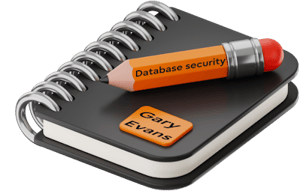
The importance of detection in cybersecurity
Detection is like the smoke alarm in your house. It’s not about preventing the fire; it’s about knowing it’s happening, and fast. In the cyber world, this translates to quickly and accurately identifying breaches or anomalies. The faster we detect, the quicker we can respond, reducing the overall impact of an incident.
The DBA’s key responsibilities in detection
Setting up alerts and notifications: Stay alert and informed. Create comprehensive alert systems for unauthorized access, data modifications, or other unusual activities. Consider it as erecting a watchtower in your digital fortress.
PostgreSQL offers a wide array of monitoring capabilities through its detailed catalogue interface, presenting metrics as tables or views (prefixed with 'pg_'). Popular ones include pg_stat_activity, pg_stat_user_tables, and pg_stat_user_indexes. These views can be enhanced with extensions like pg_stat_statements for deeper query performance insights.
Implementing real-time monitoring: Keep a continuous watch. Utilize tools to track database activities, logins, and transactions, maintaining a vigilant eye over your data landscape.
A variety of both open-source and proprietary tools are available for this purpose, including Nagios, Zabbix, Prometheus/Grafana, Datadog, SolarWinds, and Foglight. For a lightweight approach, pgAdmin provides basic monitoring, while tools like pg_top add value to your monitoring suite. If you seek a comprehensive solution, Data Sentinel is highly recommended for monitoring multiple clusters.
Anomaly detection: Subtle threats often go unnoticed. Utilizing anomaly detection tools can help identify deviations from normal patterns, possibly signalling a breach.
Many of the aforementioned tools include anomaly detection features. We'll delve deeper into this topic in a future blog.
Regular audits and reviews: Regularly auditing logs and database activities is vital. It's akin to post-event detective work, often uncovering gaps in defences or ongoing issues.
Staying informed on threat intelligence: Keep abreast of the latest cybersecurity threats. Understanding new attack vectors and emerging threats is key to refining your detection strategies.
Why detection is a game changer
In the overarching scheme of cybersecurity, detection serves as an early warning system, preventing minor issues from escalating into major data breaches. A robust detection system not only conserves time and resources but also maintains the integrity and trustworthiness of our data management.
Wrapping up
 As DBAs, our role in the 'Detect' pillar is all about vigilance and responsiveness. By focusing on these crucial areas, we're not just protecting data; we're proactively safeguarding our organization's digital well-being.
As DBAs, our role in the 'Detect' pillar is all about vigilance and responsiveness. By focusing on these crucial areas, we're not just protecting data; we're proactively safeguarding our organization's digital well-being.
That's all for today! In data security, being proactive is paramount, and in detection, it's about staying ahead of the game. Keep detecting, keep securing!
Want to know more? Then subscribe to be notified of new posts.


 Hey there, Database Administrators!
Hey there, Database Administrators! 


